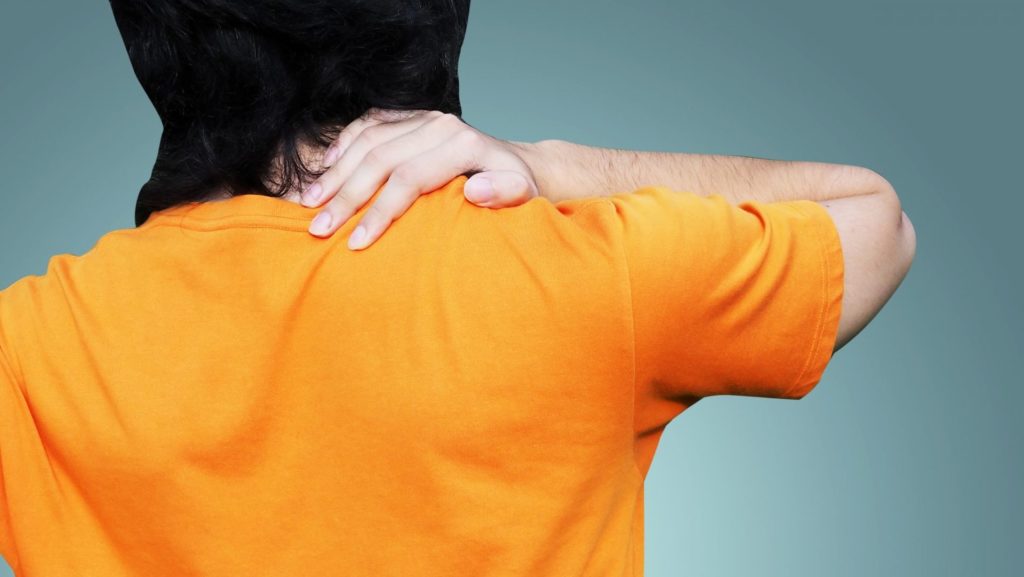Read time: 4:30 Mins.
Pain is the most common condition which patients say they use cannabis. Across the country it comes in as the top reason in multiple surveys of medical marijuana patients, reaching 90% in some states. This is no surprise, as approximately one in every four Americans, have experienced pain that lasts longer than 24 hours, and millions more feel acute pain. Arthritis, the most common cause of joint pain, eventually affects half of the adult population. These are just a few of the reasons why patients use cannabis to treat pain.
Chronic pain is the most common cause of long-term disability. When we add emotional pain, such as depression, anxiety or post-traumatic stress disorder, we can see that almost all people have been affected by pain at some point in their life! Cannabis holds a special role in this arena due to its myriad of potential effects, including, but not limited to, analgesia, antinociception, anti-inflammatory, muscle relaxation, and mood management.
Pain – This is generally defined as a sensation ranging from mild, localized discomfort to agony. Pain has both physical and emotional components. Or, defined by The International Association for the Study of Pain (IASP) as, “An unpleasant sensory and emotional experience associated with actual or potential tissue damage.” We see in both definitions the there is an emotional component, even when the injury is purely physical. This is the distinguishing quality of cannabis, that it addresses both the physical and emotional in a way that no one drug has the capacity to do. But first, let’s look at its physical effects.
Analgesia – This is losing the ability to feel pain. Usually, this is facilitated by a substance, most commonly a drug known as an analgesic. Currently, opioids are the only analgesics federally legal for treating severe pain. They come with problematic side effects, most notably tolerance and dependence. Dependence, or addiction, is treatable, but not without suffering and a return of pain. Consequently, after using opiates, there are lower endogenous endorphin levels leading to an even greater degree of pain. Yet tolerance is an even greater issue, as the body becomes desensitized and accustomed to opiate medicine, it is less effective at the same dose, requiring increased dosing. With chronic pain, this can get to be so high that side effects outweigh its advantages, making opiates a poor choice for chronic pain.
Much interest has turned to cannabis as an alternative to opiates for analgesia. In addition to their own pain management properties, cannabinoids such as THC work well with opiates, meaning they amplify pain management allowing a lower effective dose of the opiate. Also, the terpene myrcene is an analgesic that seems to work within our body’s opioid receptor system. A THC-rich indica strain high in myrcene will be most effective as an analgesic.
Antinociceptive –This is the process of blocking the detection of a painful stimulus by our sensory neurons. In other words, you feel less pain as a result of altering the detection mechanism. Cannabis, especially THC, mimics our own endocannabinoid system to modulate “nociception.” These are pain signals that travel along a chain of nerve fibers via the spinal cord to the brain. There’s an old adage in the medical community that “Pain isn’t pain until it reaches the brain.” So, the stimulus might be the same, but with antinociception, we don’t experience the same level of pain. THC-rich types of cannabis have been proven to decrease nociception.
Anti-inflammatory – Generally known as a substance that reduces inflammation, reducing symptoms of redness, swelling, and pain. The way inflammation contributes to causing pain is a complex pathway involving cellular mediators that stimulate nerve endings in the area of inflammation. Most cannabinoids are anti-inflammatory, including THC, CBD, and cannabinoid acids. Also, several terpenes in cannabis are anti-inflammatory, including beta-caryophyllene, alpha-pinene, myrcene, humulene, as well as some flavonoid components of cannabis. This is the type of pain for which CBD-rich products are most effective, although almost all types of cannabis will help. Using a THC-CBD-cannabinoid acid mix provides triple protection because they work through different mechanisms.
Muscle relaxation – This can be defined as affecting skeletal muscle function to decrease muscle tone. A muscle relaxant may be used to alleviate symptoms such as muscle spasms, pain, and spasticity. When a muscle goes into spasm, we feel pain due to muscle nociceptor stimulation, so antinociception and the effect of THC applies here as well. The action of CBD as a muscle relaxant likely operates on a separate pathway, so combining the two types of cannabis has merit. Also, the terpene myrcene has muscle relaxant properties, and linalool is anticonvulsant. Relaxing indica or hybrid strains give “body dominant effects” due to these relaxing terpenes.
The mood-altering properties of cannabis actually tie up the package in a way that analgesics alone can’t do. We often hear pain patients who use cannabis say, “I don’t know if the pain level is the same, but if it is, I don’t care as much”. That ability to shift one’s perception from focusing on pain to another perspective is invaluable. In fact, that is the premise behind using hypnosis to treat pain. The perception of pain is what makes the experience of pain, or ability to tolerate it, so varied among different people. Again, here is where selecting the type of cannabis that has the best value for an individual is important. For those who get anxious with pain, or get tense from pain, or who have a worry response when an injury happens, then CBD-rich cannabis is appropriate because it reduces anxiety. For those who want to shift perception away from the pain, and are also “worriers”, the addition of THC will help, a mixed strain, or a CBD/THC 2:1 or 3:1 tincture. For those who feel comfortable with an altered perception and do well on THC, finding an uplifting strain, a sativa type may be best for pain management, fatigue, depression, and shift in focus. Of course, the indica strains will be better for evenings and for those who need more rest. Topicals are a great additional way to treat pain, especially in a discrete injured area, but they would not be expected to shift one’s mood. Although if less pain results, that alone will shift one’s mood. Remember that not all types of cannabis work for all people and for all types of pain. And no amount of cannabis can be expected to be fully effective at reducing high levels of pain, but it will likely help.
What types of cannabis do you use for helping with pain? Is there a strain or a product that you use regularly? Log in, make a comment or share your experience on our social channels.
Deborah Malka, M.D., Ph.D., is an Integrative Medicine Physician and a Cannabis Clinical Specialist. She is also the Chief Medical Officer for Three Wells. Dr. Malka is available for consultation and can be reached at 831-359-7679.




